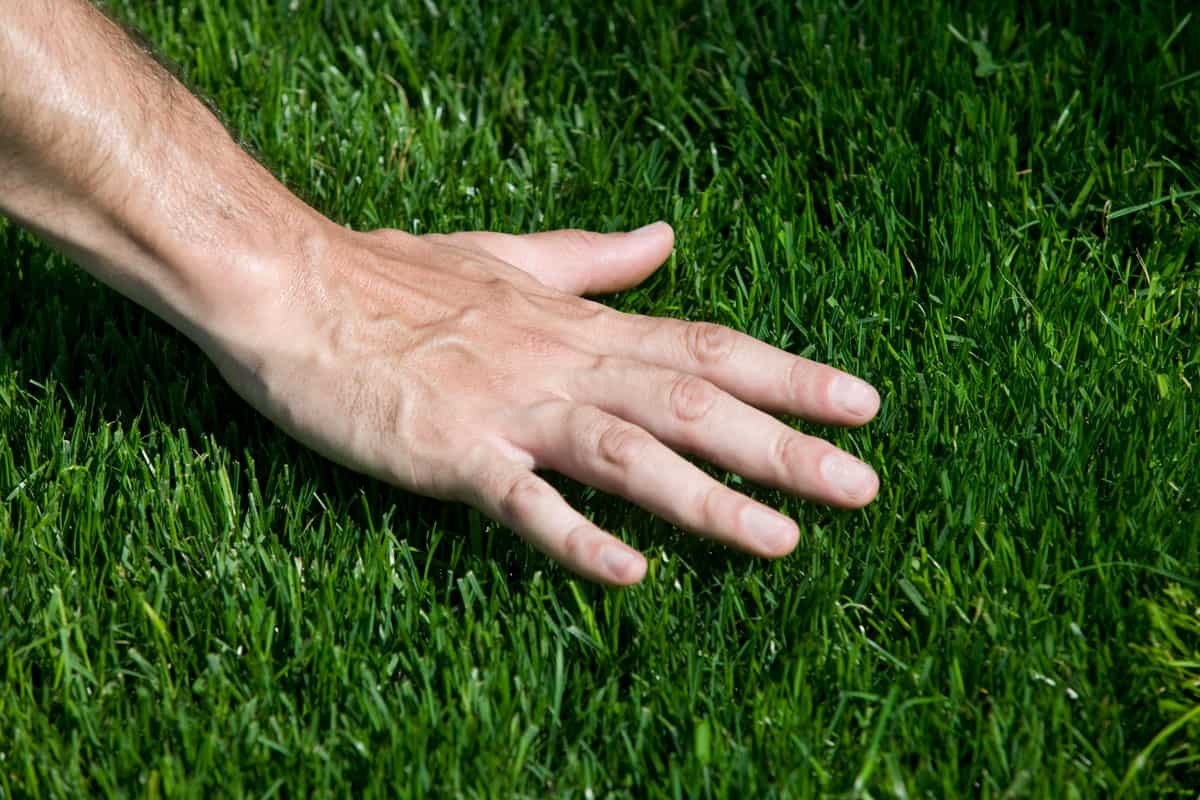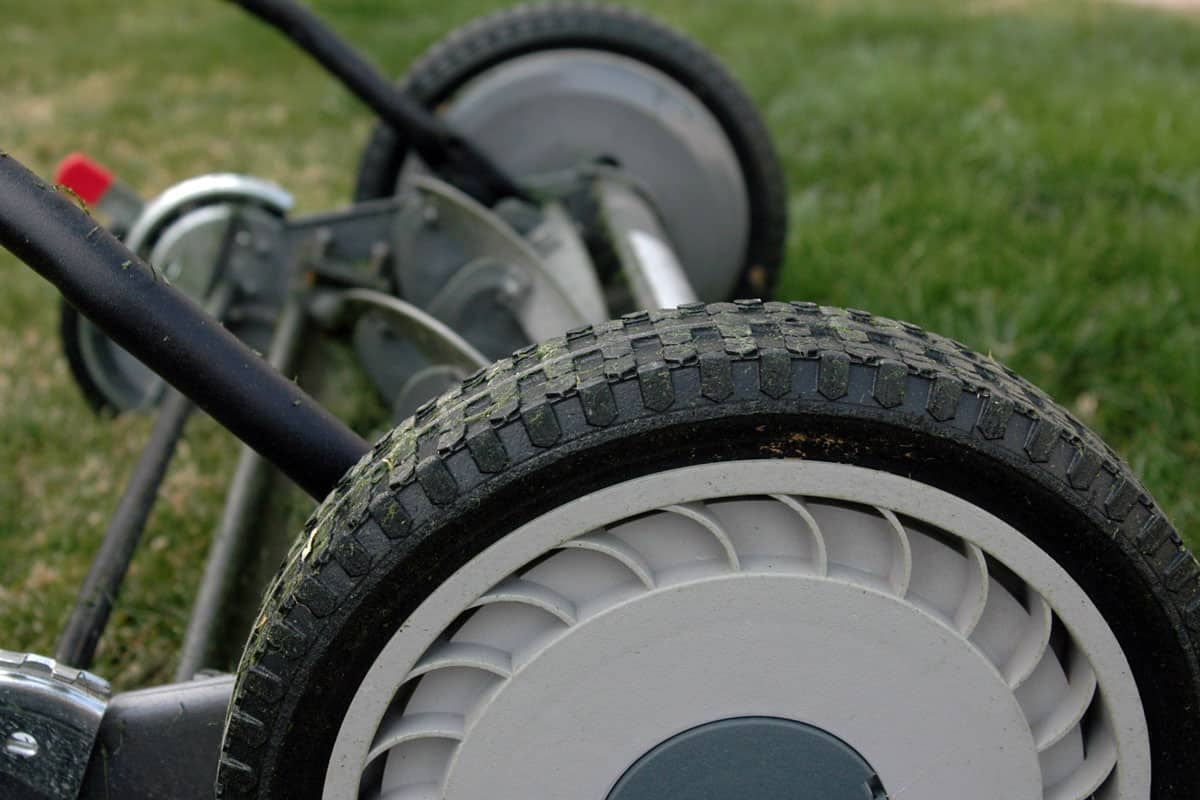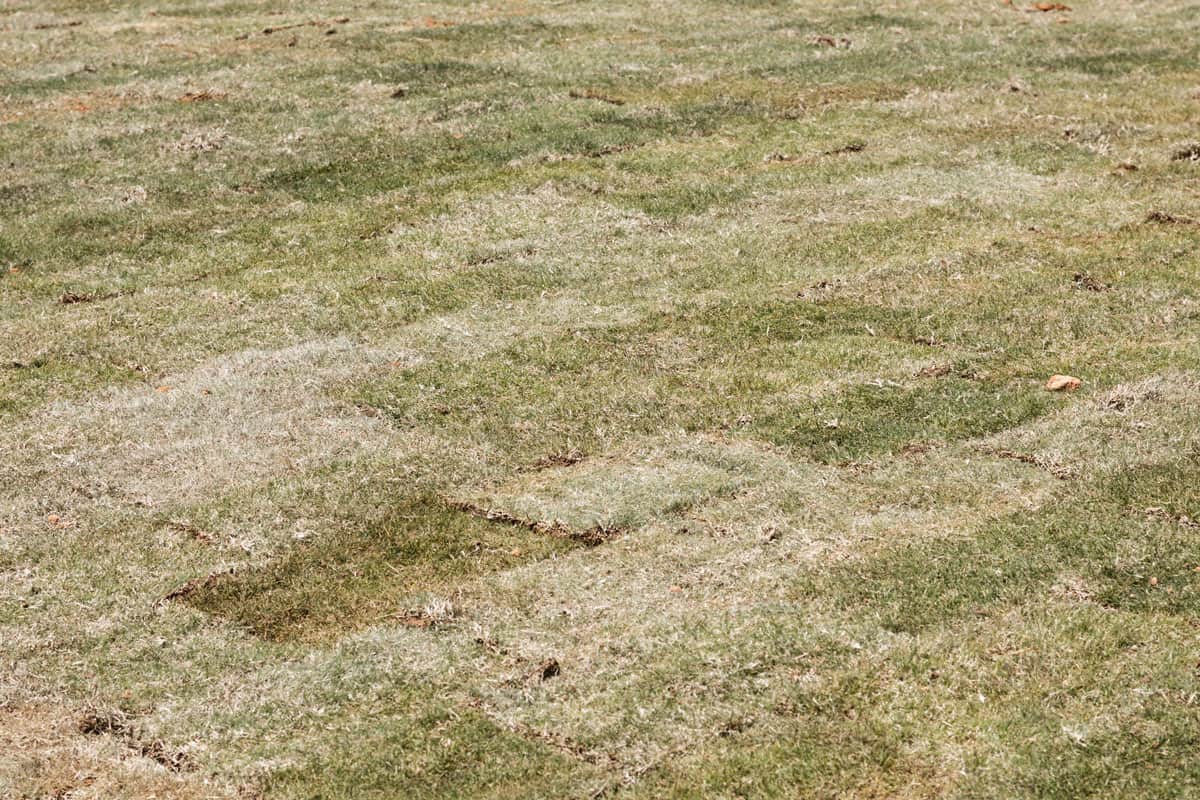Many homeowners have trouble getting their Bermuda grass to turn dark green. It leads them to scour the internet looking for help to make their grass this desired color. After some research, we found tips to ensure your Bermuda grass reaches its full potential.
Turning Bermuda grass dark green isn't a single-step process. It'll require putting in a little effort and following each of these five tips to get a perfect dark green color. See below:
- Water Regularly
- Aerating Your Lawn in Early Summer
- Choose and Use the Proper Fertilizer
- Mowing Correctly
- Checking and Getting the pH Levels Correct
At first glance, these tips might appear a bit vague. But in the following sections, we will dive deeper into each one and answer related questions. These discussions will ensure you have no trouble turning and keeping your Bermuda grass dark green. So, read on!
![Lawn, Agricultural Field, Front or Back Yard, Meadow, Grounds, How To Make Bermuda Grass Dark Green [5 Helpful Tips]](https://gardentabs.com/wp-content/uploads/2022/05/What-Color-Paint-Goes-With-Brown-Granite.png)
5 Tips To Make Bermuda Grass Dark Green
The key to making Bermuda grass dark green isn't about choosing one of these tips. It's about following them all to get the desired results.

If you do, your lawn will soon be a source of jealousy for your neighbors. So, let's not waste any more time and dive right into our first tip:
1. Water Regularly
It may seem like common sense, but watering Bermuda grass regularly is crucial. You should do it once or twice a week for 30 mins to 1 hour during growing season, which will help the roots grow deep.
A deeper root system will help keep your grass green during hot and dry weather.
We recommend these watering sessions take place early in the morning or later at night. It'll help prevent evaporation from occurring too quickly. You also don't want to water Bermuda grass when it's hot and windy for the same reason.
Letting Bermuda grass go too long without water will turn it into an ugly yellow or lighter green. You don't want this outcome, so it's best to stick with this once or twice a week watering routine.

2. Aerating Your Lawn in Early Summer
Your Bermuda grass needs nutrients and moisture to achieve its ideal dark green color. An excellent way to provide this is by aerating your lawn in the early summer. It'll deliver both moisture and nutrients without getting bogged down under a thatch layer.
Most people often find core aerators to work the best. Thankfully, core aerators aren't too hard to find, and most home improvement stores will allow you to rent them. You can then use these machines to roll over your lawn and remove soil plugs.
As a result, the roots receive a bit more room to grow. It'll also keep the soil from becoming too compacted, so moisture can reach your grass roots. The aeration process will probably require two sessions.
Also, it's essential to ensure the second time is executed at a 90-degree angle to the first one. Otherwise, your lawn won't get complete coverage.
3. Choose and Use the Correct Fertilizer
Bermuda grass works best with a slow-release fertilizer applied every 4 to 6 weeks during its growing season. You'll also want to make sure it's a fertilizer with nitrogen. These options will provide your grass with a dark green color and nutrients for growth.
If you're fertilizing for the first time, we suggest starting with half of what's recommended. After that, you want to work your way up from there until the Bermuda grass has turned dark green.
It's imperative to avoid over-fertilizing, as it'll only cause yellow or brown coloring quicker.
4. Mowing Correctly
Bermuda grass keeps its color better when it's cut short. Longer grass will hide part of the grass, causing it to turn brown. Mowing these longer grass blades will expose the brown sections to the world, which isn't what we want.
Prevent this outcome by mowing frequently. However, these mowing sessions should only take off less than 1/3 of the blades. In some cases, this may require mowing once a week during the summer months.
We also suggest not letting your grass grow higher than 3 inches. This should prevent any browning from occurring. But do your best to refrain from mowing it too short. It'll only cause the grass to grow back darker and thicker, which puts unneeded stress on the plant.

5. Checking and Getting the pH Levels Correct
Your Bermuda grass should have a pH range between 6 and 7. But if you've been using too much fertilizer or the pH level is too low, the grass will turn an ugly light green or yellow. It's one of the leading indicators to look out for when checking the condition of your lawn.
If your pH levels are off, add agriculture lime to the soil before planting more grass seeds. It should help improve your lawn's condition significantly and get those pH levels back to where they belong.
When Does Bermuda Grass Turn Green?
Lawn owners can expect Bermuda grass to turn green from February to April. Of course, your location will impact this timetable. But most people should see their grass turn green during the spring.
If you're looking for a more specific range, look at the temperature. The process usually begins when the daytime temperature rises to about 75 F and nighttime temperatures remain over 60 F.
Your grass will produce chlorophyll if these two temperatures remain stable for about five days. From there, it should turn green and offer you the lawn you've been wanting.
Why Is My Bermuda Grass Not Very Green?
If your Bermuda grass isn't overly green or has a yellow color, the problem is often chlorosis. It's a condition that turns green chlorophyll in grass yellow. This happens because of your grass's deficiencies in minerals and vitamins.
Another potential cause for Bermuda grass lacking green coloring is too much nitrogen. As we mentioned earlier, nitrogen is crucial for keeping your grass healthy and growing. But an excessive amount can be harmful, especially when you don't fertilize enough.
Of course, cold weather can impact your Bermuda grass too. Bermuda grass is a warm-season grass, so it'll struggle to produce chlorophyll as the temperatures drop. It'll lead to the grass losing its color over those winter months.
It's also essential to note Bermuda grass will go completely dormant in freezing temperatures. So, anything temperature under 32 F will cause dormancy. Luckily, full-scale grass death won't occur until temperatures are as low as 0 F.

How To Keep Bermuda Grass Green In Winter
Keeping Bermuda grass green in the winter is a challenge, but it's not impossible. Your primary source of contention is the ground freezing. You can't let this happen if there's any hope of maintaining your green grass.
It becomes essential to use and keep mulch close to your Bermuda grass at all times. It'll protect your grass from any frost that may occur on the soil's surface. This action should keep the ground from freezing.
You'll also want to stop applying fertilizer and other chemicals during the late summer. It should help prepare your grass for upcoming colder temperatures. In doing so, it'll do a better job maintaining the desired green coloring throughout the harsh winter months.
After all, nitrogen stays in the soil longer and could cause young shoots to grow in the winter. This situation will only damage these shoots by exposing them to cold temperatures. Therefore, it's best to stop fertilizing before the fall and winter months.
In Closing

Making your Bermuda grass dark green is about structuring and sticking with a maintenance routine. It becomes straightforward once you know how to water, fertilize, mow, check the pH levels, and tell when your Bermuda grass needs aeration.
Before you go, don't forget to take a look at these other posts:
